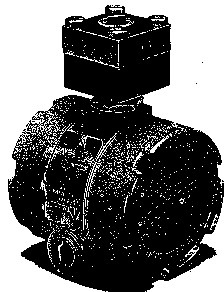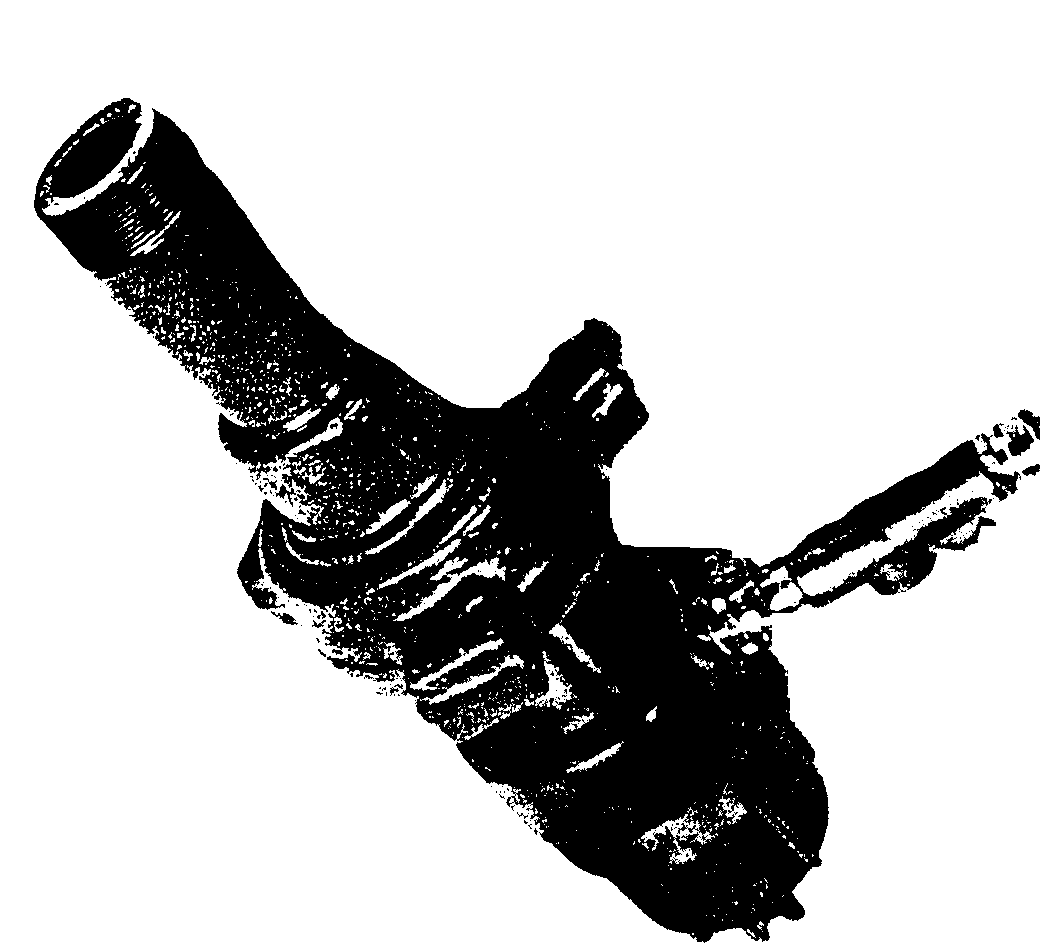
- •Rig types & components rig processes
- •June, 2002 Contents
- •Drilling programme
- •Casing and cementing programme
- •Bits and Hydraulics programme
- •Mud programme
- •Drilling procedures programme
- •Figure 02
- •Semi-submersibles
- •Figure 03
- •Drill ships
- •D. Platform rigs
- •The drilling types
- •Rotary drilling:
- •Cable tool drilling:
- •Land rig components
- •1. Mast or Derrick
- •Figure 07
- •2. Substructure
- •Figure 08
- •1 0. Tongs
- •11. Prime Movers (Engines )
- •12. Transmission
- •13. Draw Works
- •Figure 12
- •Figure 13
- •14. Drilling Line
- •15. Rotary Table
- •Figure 14
- •19. Top drive
- •20. Heave (Motion) Compensation
- •Drill string Compensator:
- •Riser and Guideline Tensioners
- •Figure 18
- •21. Drill String
- •Figure 19
- •Figure 20
- •Figure 21
- •I) Hole Openers
- •Figure 22
- •22. Casing head
- •23. Mud pumps (Slush Pumps)
- •24. Kelly Line-Rotary Hose (Mud Hose)
- •25. Shale Shaker
- •26. Desanders and Desilters
- •27. Degassers
- •28. Mud Pits
- •29. Bop’s (Blow-Out Preventers)
- •Figure 25
- •Figure 26
- •Rig personnel
- •List of Common Drilling Terms
- •3.The drilling mud
- •Composition and nature of drilling muds
- •Types of mud
- •Mud Properties Termenology
- •De nsity
- •Gel strength:
- •Filtration
- •Alkalinity
- •Chloride Content
- •Installing Christmas Tree
- •Directional Drilling
- •Drilling to total depth (td)
- •Conventional coring:
- •Sidewall coring
- •Tripping
- •Figure 27
- •Stuck pipe
- •1. Differential sticking
- •2. Mechanical sticking
- •Fishing
- •Wireline logging (electric) logging
- •Cement Figure 30
- •(Figure 31)
- •Completing the well & Setting Production Casing
- •Perforating production casing
- •Drill Stem Test (dst)
- •Acidizing
- •Fracturing
- •Installing the Christmas Tree
- •5.Mud Logging Definition
- •Types of mud logging units
- •Duties & responsibilities
- •I) mud logging unit captain
- •6.The mud logging theory & lag
- •Answers
- •Trip-out monitoring procedures
- •7.Sample collection and description
- •Preparation for collection of cutting sample
- •Shaker Samples
- •Sample Descriptions
- •Rock Types
- •Describing and logging oil shows
- •Acetone Test
- •Heat Test
- •Hot Water Test
- •Acid Test
- •Some Criteria & Procedures For Rock & Mineral Identification Testing Methods:
- •General remarks on sample escription
- •Contamination of cuttings
- •8.Gas system
- •Gas Curve
- •Types of recorded gases
- •1) Cuttings gas (formation gas)
- •2) Background gas
- •3) Trip gas
- •4) Connection gas
- •4) Circulation gas
- •Gas detection and analysis monitoring equipment
- •Gas trap assembly
- •Fid gas detector
- •Fid gas chromatograph
- •9.Sensors
- •Sensors specifications
- •1.Hook load sensor
- •2.Torque sensors Electric torque type:
- •Mechanical torque type:
- •3.Standpipe and choke pressure sensors
- •1. Strain gauge type:
- •2. Current loop type:
- •7.Analog rotary speed sensor
- •8.Pit volume sensors
- •9.Flow out sensors
- •10.Mud temperature sensors
- •11 .Mud density sensor
- •12. Mud conductivity sensor
- •13. Depth sensor
- •14. Pump stroke sensor
- •15. Digital rotary speed sensor
- •16.Gas trap assembly
- •17. Hydrogen sulphide gas detector - h2s
- •Basic Mud Logging
1.Hook load sensor
 The
Hookload sensor normally used is a pressure transducer which ties
into the rig’s deadline anchor system. The standard configuration
uses a Rosemount E-1144-GO - 600 psi pressure transducer. The span of
the sensor can be varied from 0-150 psi to 0-600 psi to match the rig
system and provide the optimum signal range. High capacity hookload
system may need a 0-1200 psi system.
The
Hookload sensor normally used is a pressure transducer which ties
into the rig’s deadline anchor system. The standard configuration
uses a Rosemount E-1144-GO - 600 psi pressure transducer. The span of
the sensor can be varied from 0-150 psi to 0-600 psi to match the rig
system and provide the optimum signal range. High capacity hookload
system may need a 0-1200 psi system.
The sensor is provided with 24 VDC excitation and produces 4-20 m.a. signal. This is processed by a signal conditioner card to give a 0-10VDC analogue signal to the computer. The use of the current signal on this sensor provides a signal which is liable to lower interference and provides a faster and more accurate response for the computer.
A pancake type load cell is available as an option. This utilises the normal sensor but ties in to a Martin-seeker pancake cell mounted directly on the deadline.
2.Torque sensors Electric torque type:
The electric torque sensor is an induced cutest device with a split coil. The sensor is clipped around the rotary table power cable at any convenient point and measures the rotary table current in amperes. As an option absolute torque can be monitored by combining the electrical torque sensor with a voltage measurement sensor fitted in the rotary motor power distribution cabinet.
Changes in the magnetic field around the power cable are detected by 2 Hall Effect probes and converted into a signal directly proportional to the current flowing. These are amplified by the signal conditioner to provide The computer with a 0-10 VDC analogue signal.
The computer also calcutates and databases on-line torque deviation. This is the satiation from the average torque through an interval. It is useful for PDC bit drilling optimisation and bit wear analysis.
Mechanical torque type:
A pressure transducer and connections similar to the hookload sensor are used for the mechanical torque sensor. The sensor is tied directly into the rig’s hydraulic rotary torque system.
3.Standpipe and choke pressure sensors

1. Strain gauge type:
The Standpipe and Choke Pressure Sensors use a Dynisco strain gauge transducer. The transducer consists of a box of four resistors. An excitation voltage of 15 VDC is applied to one corner and the excitation ground are taken-off from the opposite corner.
The strain gauge resistors are made from silica crystal, which has the property of changing resistance with changing pressure applied across crystal. Note that in essence, the sensor contains two resistor divider networks with the two signal wires in the middle of each. One side has a fixed resistance and thus a fixed output (signal-) while the other has a variable resistance which results in a variable output (signal+).
The signal conditioner card provides the 15 VDC excitation voltage and an amplifier circuit to produce a 0-10 VDC signal to the computer.
The only difference between the standpipe and choke sensors is the type of transducer fitted. All sensors are tested to 15,000 psi.
2. Current loop type:
This sensor measures the mud pressure by a direct contact with a pressure transducer. The standpipe sensor has 0-6000 psi transducer is normally specified. Both types of transducer are located in a housing with WECO knockon connector rated for 15,000 psi working pressure.
The transducer normally uses 24 VDC excitation and its output is 4-20 m.a. .
The transducers normally used are either Dynisco 4 wire PT11 ,or in the case of the North Sea Dynisco PT 386 two wire 4-20 m.a. transmitter.
PT 11 sensor mounted on choke manifolds rated for 15,000 psi test/working pressures will require a hydraulic tie-in to the rig’s pressure debooster on the manifold and a 0-6000 psi sensor connected into the debooster line.
For 15,000 psi working pressure choke manifolds, the Dynisco PT 386 0-15,000 psi sensor can be supplied to special order.
In some situations it may be necessary to tie-in to the Martin Decker pressure converters on the standpipe or choke manifold. The Rosemount E 1144 transducer (similar to the Hookload sensor) is usually used for this application.
